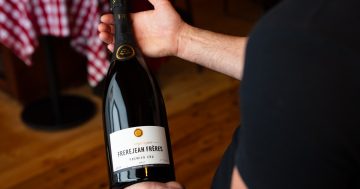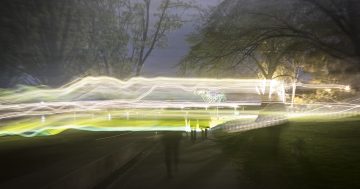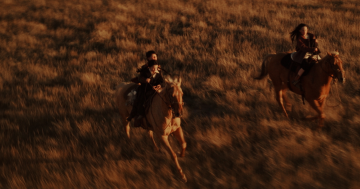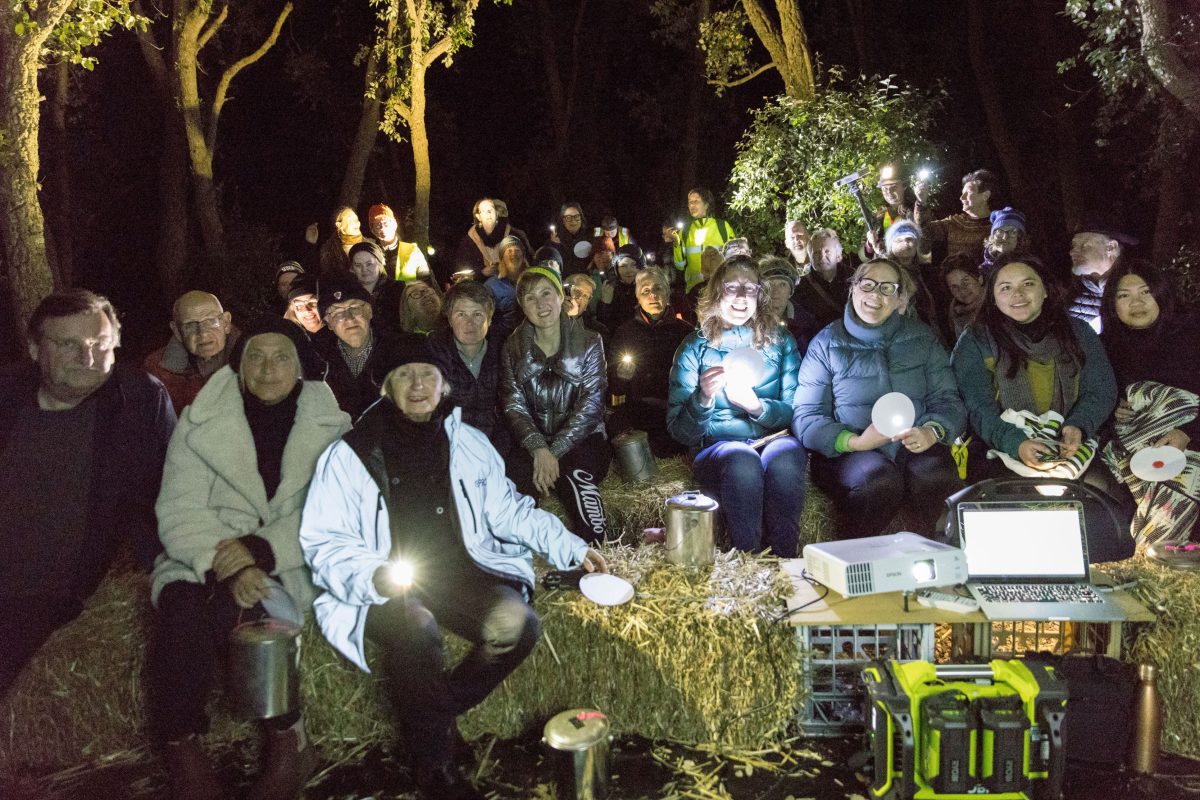
When the audience becomes the art installation – last year’s Forest Bathing event, organised by Localjinni drew a big crowd. Photo: Jane Duong.
Picture this: it’s night-time. You’re in the middle of one of Canberra’s greatest growth areas (the National Arboretum) – and you’re among like-minded souls. The ideal place, if the mood takes you, to howl at the moon.
Enter Localjinni, a people-powered public art group, where women, using a variety of arts, transform dark public places into active spaces, according to its founder Fiona Hooton.
Run with her partner Catrina Vignando, Fiona created Localjinni about six years ago. It was the next step in a career that has taken her from working in women’s refuges to developing public programs for the National Library of Australia, and creating permanent and ephemeral public art to working as a program manager in the federal arts bureaucracy.
Localjinni – in Wiradjuri language, Jinni means light on water – screens virtual exhibitions on the street, lighting up everything from street furniture to the buildings themselves and using artforms ranging from film to music and digital stories.
For Fiona, it’s all about public art – making and appreciating it. Her next project is the Forest Bathing Night Walk at the National Arboretum on 3 and 4 November, the second year Localjinni has staged a shinrin-yoku, as it is known in Japan.
The event takes walkers through the Cork Oak Plantation, connecting them to the legacy of Canberra’s designers, Marion and Walter Burley Griffin.
The Griffins saw the potential of cork oaks in Canberra’s dry climate and, in 1916, sent a supply of acorns from the Royal Botanic Gardens in Melbourne to Yarralumla Nursery for trial by horticulturalist Charles Weston who was responsible for the afforestation of Canberra. The acorns were planted on the site where the forest now stands.
Fiona said people over hundreds of years have believed cork trees, also known as wishing trees, had magical powers to bring good luck. The plantation survived Canberra’s deadly 2003 bushfires because the bark of cork oaks was believed to be fire-retardant. For the Localjinnis, it is the perfect location for sitting, meditating or forest bathing.
“The health benefits of forest bathing are well documented,” Fiona said. “What we do is take people into spaces they might not normally go at night – a lot of people don’t feel safe walking into a dark forest at night. But we do it as a collective so it’s safe – and fun.”
The collective includes artists Dr Sally Clarke, Dr Tracey Benson, Jane Duong, Nicole Voevodin-Cash, Caroline Huff and Dr Ursula Frederick, with support from the University of Canberra, Canberra Art Biennial and the National Arboretum.
“When people arrive we walk them into the forest and then in a silent meditation to the first projection site and then into the wonderful cathedral space where we talk about the ecology of the site,” Fiona said.
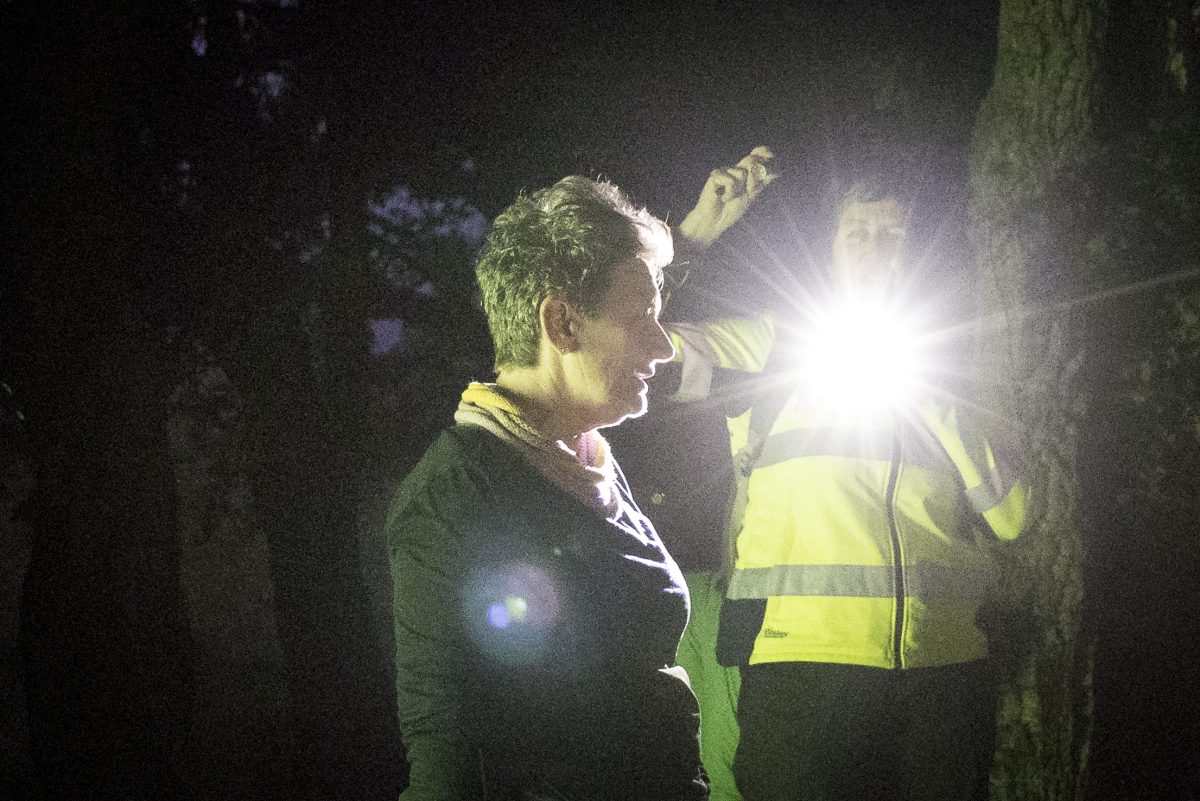
Founder of Localjinni Fiona Hooton in the spotlight when it comes to people-powered public art in Canberra. Photo: Jane Duong.
Fiona said it was all about connection, specifically learning from First Nations people. “Connecting people to place, asking questions like what it means to be a good ancestor, particularly after what we have been through … the fires. How we reconnect with what’s under our feet,” she said.
“It’s about providing access to places we wouldn’t normally go to, transforming these dark places – or just providing a place where women can walk together.
“There’s something about the night. The peace, the sounds, the beauty – all three of which make for one of the best canvases an artist can dream of. Be it through art, poetry or visual effects.”
More information about the Localjinni night walks is available on the website.











